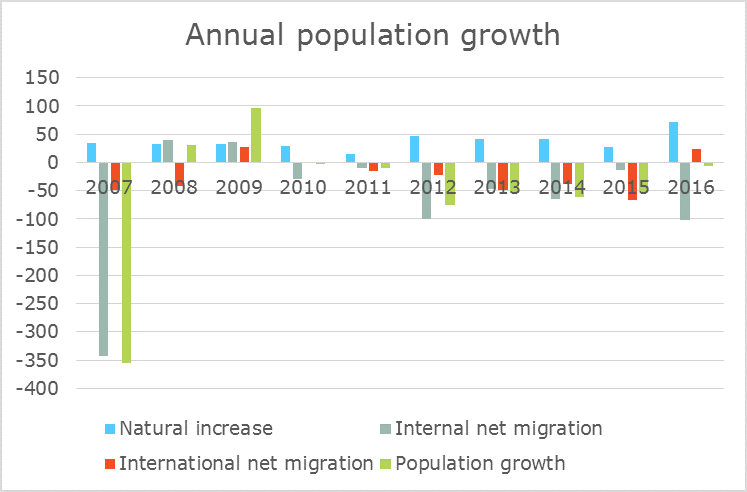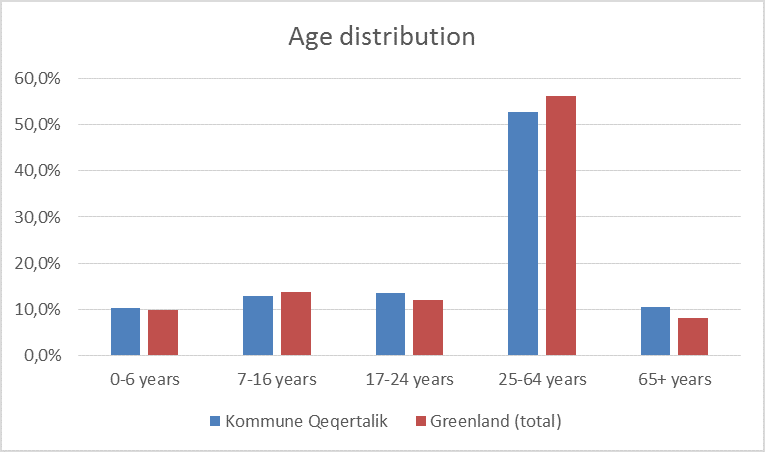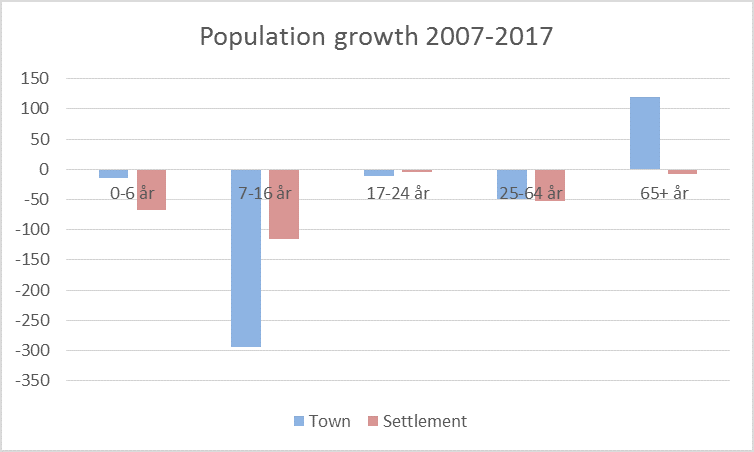Population
Nearly 12% of Greenland's population is living in Kommune Qeqertalik. On January 1, 2017, 6,500 people lived in the municipality's towns and settlements. The population living in the four towns accounts for 87% while the last 13% live in the 8 settlements. In 2007, town population comprised 84% and the population in settlements 16%. Since 2007, the population decreased by 498 persons, corresponding to 7.1%, which is a larger decline than for Greenland as a whole (-1.4%). The decline has occurred in both towns (-251 persons) and settlements (-247 persons). However, from 2016 to 2017, the decline in population has been quite modest in both towns (-4) and settlements (-4).

The number of births generally exceeds the number of deaths and since 2007, there has thus been a birth surplus of almost 40 people a year, which has contributed to a natural population growth. Conversely, there has been a net relocation (to other municipalities) of around 60 people a year, and thus the net relocation has offset the growth that births created. Finally, the net migration, which is the difference between immigrants and emigrants, contributed negatively to population development. On average, almost 20 people are emigrated every year more than immigrated. Overall, net relocation and net migration exceeded the birth surplus and resulted in an overall decline in population.

Population forecast for 2016-2030 predicts that Greenland as a whole will experience a decrease of just over 1,800 inhabitants. However, this development is expected to be dispersed unequally as towns, and especially the capital Nuuk, are expected to grow in population. The 2016 forecast for the entire Qaasuitsup Kommunia awaits a decline of more than 2,600 inhabitants before the year 2030. The forecast is not separated on towns and settlements, but it is assumed that there are major differences between the expected development in towns and in settlements, and that future development will more or less reflect the actual development of recent years.
Gender distribution and age groups
As in the rest of Greenland, there is an overweight of men in Kommune Qeqertalik. Gender distribution is thus 52.3% men and 47.7% women. In settlements, the share of women is slightly lower (45.0%) than in towns (48.1%).
23% of the municipality's inhabitants are children and adolescents up to 16 years old. 14% are aged 17-24 years and 53% are aged 25-64 years, while 10% are over 65 years. Compared to the general age distribution in Greenland, Kommune Qeqertalik has relatively many in the age group over 65 and relatively few in the age group 25-64 years.


The last 10 years there has been a significant decline in the group 7-16 years, while the number of people aged 65+ has increased. The increase in 65+ years has occurred in the towns.



